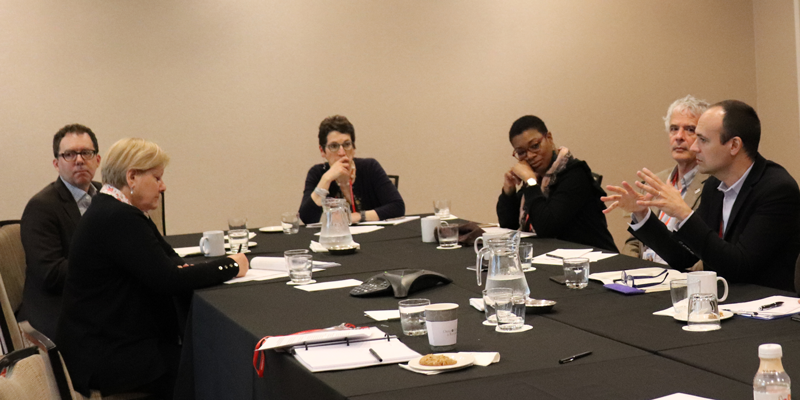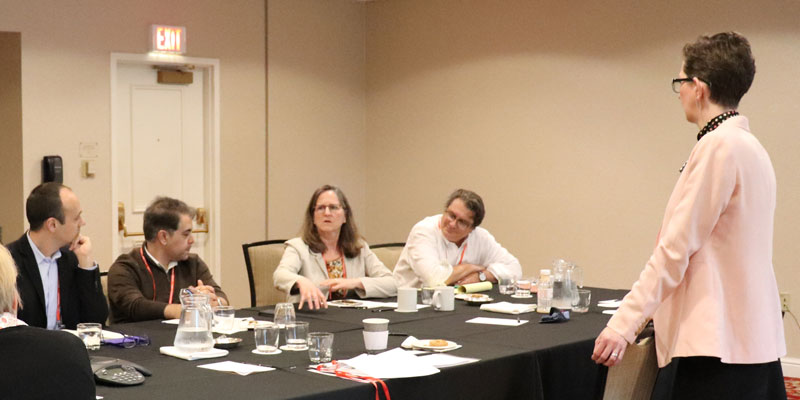-
Membership
Membership
Anyone with an interest in the history of the built environment is welcome to join the Society of Architectural Historians -
Conferences
Conferences
SAH Annual International Conferences bring members together for scholarly exchange and networking -
Publications
Publications
Through print and digital publications, SAH documents the history of the built environment and disseminates scholarshipLatest Issue:

-
Programs
Programs
SAH promotes meaningful engagement with the history of the built environment through its programsMember Programs
-
Jobs & Opportunities
Jobs & Opportunities
SAH provides resources, fellowships, and grants to help further your career and professional life -
Support
Support
We invite you to support the educational mission of SAH by making a gift, becoming a member, or volunteering -
About
About
SAH promotes the study, interpretation, and conservation of the built environment worldwide for the benefit of all
Where Is Architectural History Thriving?
Welcome to The SAH Data Project’s process blog, a series of short-form reflections and interviews about the Society’s study of architectural history in higher education. By Sarah M. Dreller, Postdoctoral Researcher in the Humanities. #SAHDataProject
There’s something a little curious about the Society’s effort to describe and analyze the status of architectural history in higher education: it is called the “SAH Data Project” but the dedicated staff person—me—has the title of “Researcher in the Humanities.” Data and humanism together? Can we combine the urge to quantify with the study of the unquantifiable in the same undertaking? Can any really meaningful results come of this synthesis?
Of course I think the answer is yes and that it can be more than just collecting information about the humanities, too. I also think it deserves some unpacking. I say that because not everyone bothers to examine or explain their relationship with metrics, and I want you to know that we’re trying to find a more nuanced path. After all, we are a group of humanists who have placed a specific form of deliberately humanistic practice at the center of our research. And we hope the resulting report will do what good humanistic inquiry does, which is to stimulate conversation with the questions it inspires rather than shut down debate with comfortingly tidy conclusions. So we’re intent on developing a form that follows our function: a methodology that values experience, judgement, and instinct and that looks for the ingredients of human-centered stories that matter.
I’d like to start with a concrete example of how we’re infusing humanism into our information-gathering work. From the beginning the SAH Data Project has taken a layered approach to soliciting guidance that is specifically designed to create opportunities for thoughtful discussion and generally neutralize the conditions under which an uncritical reliance on hard data could form. This infrastructure consists of two simultaneous tracks that do complementary things: one provides regular bursts of feedback on the project as a whole while the other provides very in-depth occasional feedback on selected topics. The former we’re calling the Advisory Committee and consists of twelve historians who are currently teaching in or otherwise associated with the full range of degree-granting programs and institutions. The latter is a series of four day-long meetings that will involve eight different stakeholders per meeting from the wider universe in which some version of architectural history is valued and practiced.

The SAH Data Project’s Advisory Committee convened in person for the first time at SAH’s 2019 annual meeting in Providence. Here, Jorge Otero-Pailos (far right) shares his perspective on architectural history’s strengths and weaknesses as a discipline in higher education. Other committee members include (left to right): Michael Lee; Pauline Saliga, Abigail Van Slyck (Chair); Amber Wiley; and Sandy Isenstadt
Regardless of format, though, everyone is receiving the same basic charge. We want them to give us their perspectives on which aspects of architectural history are thriving and where the field is faltering. In higher education, particularly, we want to know what they think the term “thriving” actually means. The point is to begin developing a kind of consensus around which qualities the field really needs to be the most robust version of itself so that, in turn, we can design the research to collect data about the status of these same qualities. So far I’ve had this conversation one-on-one with every member of the Advisory Committee and they discussed it as a group, too. It was enlightening and productive, and the stakeholder meetings are still to come. To be sure, this is a messier and more laborious process than it could have otherwise been. But human it most certainly is.
Between the Advisory Committee and stakeholder meetings we’re talking about forty-four individuals who will be sharing their informed observations and aspirations about a thriving field. Perhaps that doesn’t seem like very many people when presented as just a one-dimensional number. What if, instead, we reimagine this group in terms of their rich collective knowledge as thinkers, writers, makers, and doers? There are various ways to approach that but for demonstration’s sake here we can say that since participants range from students to emeriti faculty, they will each bring about seventeen years of experience to our discussions. Do that math and you find that this part of the project alone actively solicits meaningful advice based on a combined total of seven-and-a-half centuries of humanistic work dedicated to understanding the built environment. Suddenly the commitment behind creating this process and the effort I’m expending managing it all has a lot more meaning.

The SAH Data Project’s Advisory Committee also suggested potential survey data points during their first in-person meeting. Here, Martha McNamara (center) discusses the benefits and drawbacks of a particular group of questions. Other committee members include (left to right): Jorge Otero-Pailos; Mohammad Gharipour; and Bill Littmann. I’m standing to the far right.
Future blog posts will offer other examples. For now I think it’s important to acknowledge that we’re not the first to value a humanistic mindset within the context of data-focused research. Since the project is currently in its visioning phases, I’ve been considering The Tyranny of Metrics by Jerry Muller, a historian of organizations, and Weapons of Math Destruction: How Big Data Increases Inequality and Threatens Democracy by Cathy O’Neil, a former quantitative analyst. As you can probably imagine from the titles these authors have chosen, both describe society’s dangerous reliance on uncritical data systems. That’s been important as a way to identify potential pitfalls but it’s not all doom and gloom. Importantly, as an effective antidote Muller and O’Neil recommend incorporating more human judgement into data work. Muller’s most resonant suggestion is to create opportunities for the people being studied to participate in decisions about what information is collected and how it will be used. The guidance infrastructure I described earlier had already been established by the time I heard Muller say this so it served primarily as a welcome confirmation that we were on the right track. I also came across O’Neil’s suggestion to build in frequent and thoughtful self-audits after having committed to the blog, but in this case there was time to plan out the writing schedule in ways that turned the blog into a trigger for checking in with what we’re doing and why we’re doing it.
In addition to the authors whose ideas can be clearly associated with specific elements of our project, there is one person whose work is a true touchstone for me: Giorgia Lupi. Indeed, no one can put the words data and humanism in the same sentence without also including this brilliant information designer who has done so much to push back at the lack of critical self-awareness in her field. Lupi’s manifesto, “Data Humanism, the Revolution will be Visualized,” is the place to start but, really, I would encourage you to also watch one of her recorded presentations (TED or 99U). There is something very compelling about her charisma and authenticity, something that is hard to articulate and that I suspect makes her case as effectively as her words. Alexandra Lange’s profile for the New Yorker, published just this May, will fill out some of the details of the Lupi’s background for you better than I could summarize here.
Where is architectural history thriving and where is the field faltering? In higher education, particularly, what does the term “thriving” actually mean? Which qualities does the field need to be the most robust version of itself?
As you read (and watch) Lupi describe her idea of data humanism, one thing that really becomes clear is that she is not just concerned about the way information is visualized, although that is her main output. It’s also about integrating empathy across data’s entire life cycle, from the initial abstraction all the way through its processing and consumption. It’s about the way we imagine what can and should be measured, how we gather that information, the narratives we assign, the tools we choose to conceptualize it in correlation with other data. It’s about honoring the fact that the data we collect about people are more than just numbers on a screen.
For some reason the example Lupi offers that has stuck in my head the most is the week she experimented with tracking when she checked the time and how she was feeling when she did that; by the end she’d discovered patterns in her emotional relationship with time that were more substantive than just when her eyes were most likely to drift toward a clock. That’s the kind of nuanced insight I’d like to see our project yield for architectural history, so I wasn’t surprised when I realized recently that I think about Lupi’s work especially when we’re debating the qualitative questions we could include on our survey. If we do it right, this is the kind of information that could give dimensionality to all manner of otherwise hard data like enrollment numbers, the relative percentages of tenure-stream vs. contingent faculty positions, and so on. And while we don’t yet know what, if anything, that data will tell us, the desire to ask in case we uncover something meaningful about our constituencies just kind of feels right. That’s instinct, it’s human, and we’re trusting it.
The SAH Data Project is gathering quantitative and qualitative information about the status of architectural history as a field in higher education. The study is supported by The Andrew W. Mellon Foundation and scheduled to be completed in December 2020. A full report of the findings will be available on the SAH website in early 2021.


Leave a commentOrder by
Newest on top Oldest on top